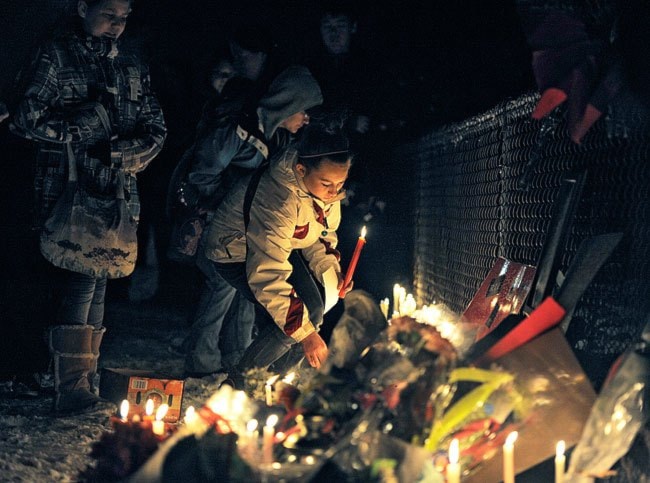After two murders in 2014, the Kwanlin Dun First Nation took a hard look at what was happening in the McIntyre subdivision and the results were shocking.
There were over a thousand calls to 911 in 2014 alone for a population of just 500.
That’s twice the amount of calls similar-sized Yukon communities get.
The McIntyre subdivision stretches over a one kilometre by one kilometre area.
The First Nation government learned that 80 per cent of the calls were alcohol or drug related. But most calls didn’t result in charges.
“The community was not following through with the proper evidence that officials needed,” KDFN Justice Director Jeanie Dendys said during a briefing on Friday.
There is lack of confidence in the mainstream justice system, she added.
“The RCMP presence in the community is sporadic at best, and the security patrols in place presently are obviously not achieving the desired outcomes,” a report prepared for the FN in 2015 states.
Residents told the First Nation about how unsafe they felt.
“We had single moms saying they sleep with baseball bats beside their beds,” Dendy said.
“Generally, (there’s) a sense of vulnerability.”
Last week the First Nation announced it was hiring several workers as part of a community safety program.
The Yukon government announced on Friday it had committed $1.4 million for a pilot program for the next three years.
The goal is to have civilian officers hired from the community to patrol the streets.
They’ll be visible and approachable for anything from criminal complaints to bylaw issues.
“The big difference here is the liaison officers will be our own people,” KDFN Chief Doris Bill said on Friday.
“They know the community, they know our people, they understand our culture.”
The program will have a number of officers that will liaise with other agencies in the city: RCMP, City of Whitehorse bylaw services and the territory’s Safer Community and Neighourhoods unit.
Gina Nagano, KDFN’s justice service coordinator, said the First Nation was looking at hiring two full-time or four part-time community safety liaison officers on top of a justice service coordinator and a community safety coordinator.
While there is not one single obvious cause to the high level of violence the community has been experiencing, Dendys said many people involved in disturbances and crimes are not KDFN citizens.
“A lot of time community members from other areas are court-ordered to not be in their community,” she said.
Often they will know somebody in the McIntyre subdivision and move there.
The program is only one component of the First Nation’s overall plan to reduce violence.
Last year they mapped the entire community down to each dwelling to apply what is known as crime prevention through environmental design. This follows the “broken windows” theory that visual reminders of a community’s disrepair, if left unaddressed, creates an atmosphere of lawlessness that encourages more serious crimes.
The first step was for the community to take part in a giant clean up.
In the end 2,000 pounds of debris, 800 litres of hazardous waste and 150 abandoned vehicles were removed from the community last summer.
That also led to clearing illegal tents and camps set up in McIntyre.
“There were party areas that were incredibly dangerous for our community,” said Dendys.
“A lot of the people responsible for that were not our citizens.”
Party and drug houses had been identified as a major issue during the assessment the First Nation conducted.
“We’re installing the pride back in the community,” said Nagano.
“Why can’t we in Kwanlin Dun have the same as what you have in Granger, Porter Creek, Riverdale or downtown Whitehorse?”
In the next years, crime reduction through environmental design will mean cameras, lit trails, speed reduction obstacles, and visible roadside checks.
For now the First Nation has cleared brush on the trails, replaced broken lights and stop signs that had gone missing for years and reduced the maximum speed in the community to 30 km/hr.
“You want people to feel safe letting their children out to play and not worry walking to school,” said Dendys.
In the long term, the First Nation is looking at transferring some of the territorial government’s justice responsibilities back to them.
That will mean having their own peacekeepers and probation officers, for example.
Contact Pierre Chauvin at
pierre.chauvin@yukon-news.com
